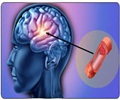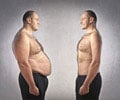- Body fat percentage - (https://en.wikipedia.org/wiki/body_fat_percentage)
- The developmental origins of adipose tissue - (http://doi.org/10.1242/dev.080549)
What is Body Fat?
Our body is composed of water, fat, protein, carbohydrates, vitamins and minerals. The fat content in the body is called body fat.
The body fat consists of essential body fat and storage body fat. The essential body fat is required for the normal life and reproductive functions. A part of storage body fat helps to protect the internal organs in the chest and abdomen.
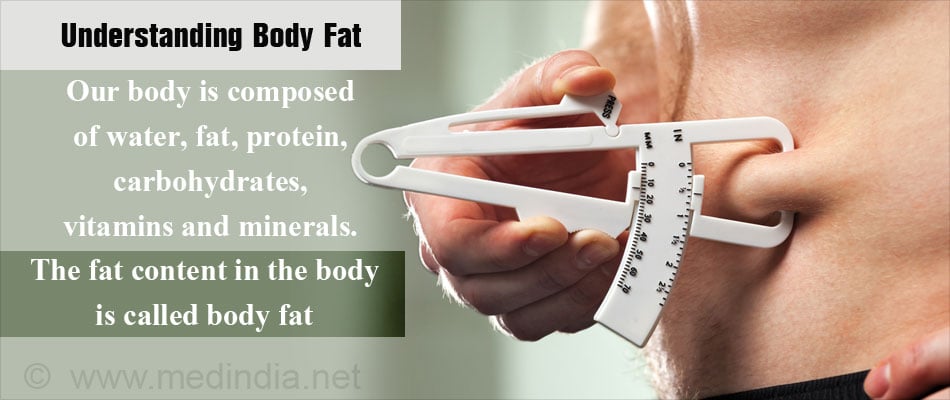
What are the Functions of Body Fat?
The body fat controls a set of biological functions like the body temperature, glucose homeostasis, appetite, aging, insulin sensitivity and fertility. However, large amounts of body fat, especially in the waist area is harmful and increases the risk of diabetes, hypertension, hypercholesterolemia, cancer, heart disease and stroke.
Listed below are some important functions of body fat:
- Provision of energy – Fats are the back-up source of energy when carbohydrates, which are the main source of energy are unavailable
- Storage of fat for future use – Dietary fat in excess of what is required is stored around waists, abdomen and thighs for future purposes.
- Protective function – Fat deposited around organs acts as a cushion and protects from injury
- Vitamin absorption – Certain vitamins, namely A D E and K are only fat soluble and need fat to be absorbed from the intestine.
- Maintenance of body temperature – The fat found underneath the skin helps to retain heat and maintain body temperature, especially when ambient temperatures drop
- Synthesis of steroid hormones – Fats are necessary for the synthesis of steroid hormones such as estrogen, progesterone, and testosterone which are important for the reproductive function.
The hormones of the adrenal gland such as cortisol and aldosterone which have very important functions also need fat for their synthesis.
- Brain function – Fat is an important component of cell membranes of nerve cells and helps preserve their structure. Fats are also necessary for the synthesis of myelin sheath, which covers the nerve fibers and enables fast transmission of nerve impulses.
- Hair and skin health – Fats help to maintain healthy hair and skin. In the absence of sufficient fat, hair and skin appear dull and lifeless.
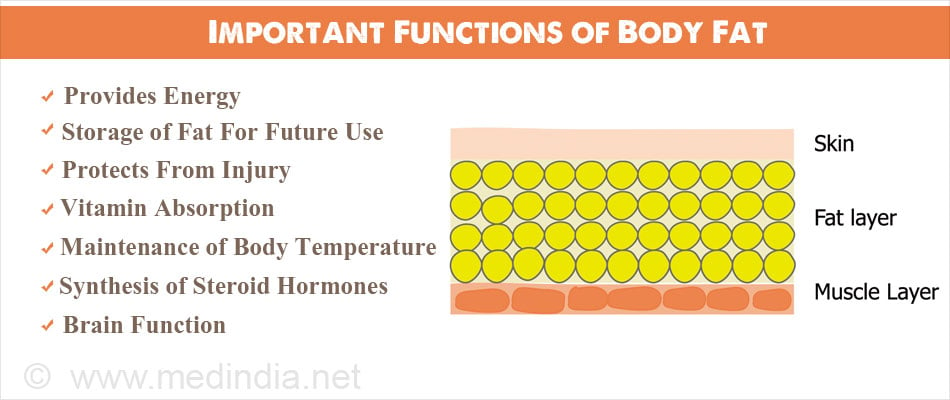
Types of Body Fat
Fat tissue or adipose tissue is mainly of two types white adipose tissue and brown adipose tissue.
White adipose tissue stores the energy and it is useful for mechanical cushioning and heat insulation. Depending on the location, it is of two types, subcutaneous (beneath the skin) and visceral (internal organs) fat tissue. An increase in the subcutaneous fat is called as a pear shaped or female pattern distribution whereas an increase in the visceral fat is called as an apple or male pattern of fat distribution.
Brown adipose tissue is mainly present in neonates for the heat dissipation. The brown tissue is also present in some adults.
How is Fat Deposited in the Body?
- The distribution of fat in females is around the thighs and buttocks like a pear shaped.
- The distribution of the fat in males is around abdomen like an apple shaped.
- Increased food intake and a decrease in the exercise can cause an excess fat accumulation in the body.
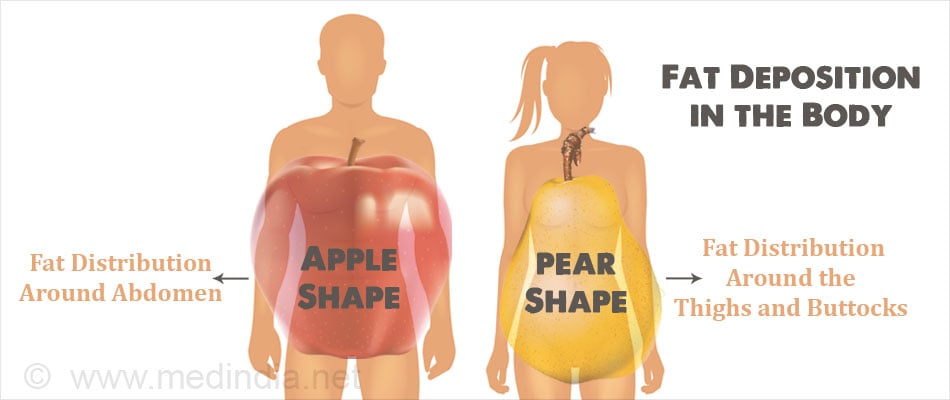
Body Fat Chart
- Essential Fat: The normal levels of essential fat average percentage in women are 13% and in men is 2-5%.
- Athletes: The average fat percentage in female athletes in 14-20% and in male athletes is 6-13%.
- Fitness: In the group of people with fitness the average fat percentage in women is 21-24% and in men is 14-17%.
- Average: In the average group of people the average fat percentage in women is 25-31% and in men is 18-24%.
- Obese: In the obese group of people the average fat percentage in women is above 32% and in men is above 25%.
How to Measure Body Fat?
Body weight is a measure, which is always related to health but, it doesn’t give the body fat estimate accurately. Following are a few methods to assess the body fat.
Body Mass Index (BMI): It is measured using the weight and height of a person. It is measured in kg/m2. Categorizing the people based on BMI is as follows:
- Underweight: BMI less than 18.5
- Normal weight: BMI 18.5 to 24
- Overweight: BMI 25 to 29.9
- Obesity: BMI above 30
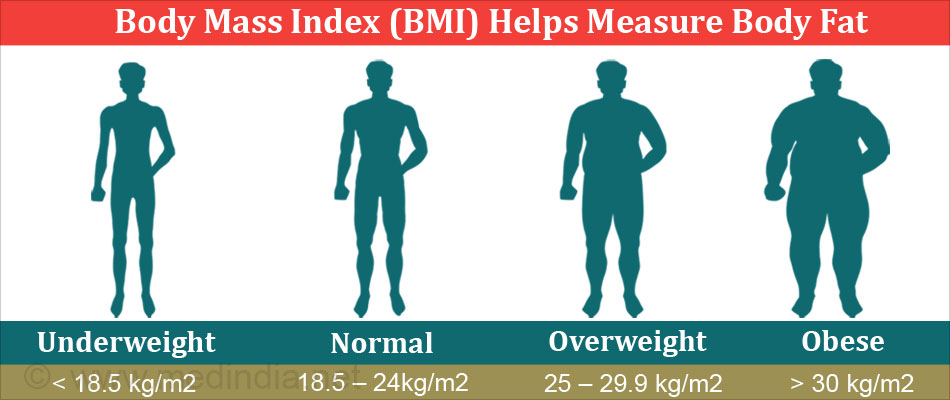
Waist Circumference: It is the easiest way to measure abdominal obesity. It is measured at the level of the umbilicus. If the BMI is more than 25 kg/m2 then the goal of waist circumference should be less than 40 inches in males and less than 35 inches in females.
Waist to Hip Ratio (WHR): Waist to hip ratio helps to measure the central or abdominal obesity It is the ratio between the waist measurement and hip measurement. In men, a ratio of 0.9 or less is considered safe and in women, a ratio of 0.8 or less is considered safe.
Skin-fold thickness: With the help of a special caliper, the thickness of the skin and the fat under it is measured in certain regions like trunk, thighs, under the shoulder blade, front and back of the arm.
Bioelectric Impedance Analysis (BIA): BIA helps to measure the body composition. It is a test where the BIA equipment sends small and safe current through the body, which measures the resistance. Fat tissue is more resistant compared to water and lean body mass. By using some equations, it helps to measure the body fat percentage and fat-free mass.
Underwater Weighing (Densitometry): It is a test where the weight of a person is measured in the air and under the water.Fat tissue has lesser density so a person with more body fat will have lesser density underwater that the person with less body fat. Certain formulas or equations are applied to estimate the body fat percentage, body volume and density.
Air Displacement Plethysmography: In this test, an individual is made to enter an enclosed chamber. By finding the pressure differences in the chamber before and after the person enters it, the body composition of an individual is estimated.
Dilution Method (Hydrometry): In this test an isotope is injected into the person and the body fluid samples are collected. By estimating the concentration of the isotope in the fluids the total body water, fat-free mass and the body fat mass are calculated.
Dual Energy X-ray Absorptiometry (DEXA): X-rays are used in this test. It helps to measure the fat-free mass, fat mass and bone mineral density.
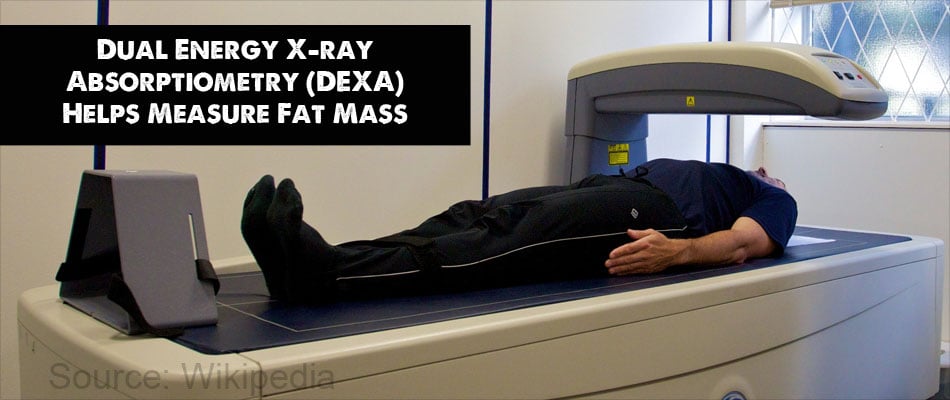
Computed Tomography (CT) and Magnetic Resonance Imaging (MRI): CT and MRI are the most accurate tests to measure the fat. They help to measure the tissue, organ and whole body fat mass and lean muscle mass and bone mass.
How to Get Rid of Excess Body Fat?
Obesity is an independent risk factor for heart disease and several cancers. The prevalence of obesity in the world is approximately 15%. It is highly essential to get rid of the excess body fat.
Regular exercise combined with a low-calorie diet helps to reduce the excess fat in the body.


